#third intermediate
Explore tagged Tumblr posts
Text






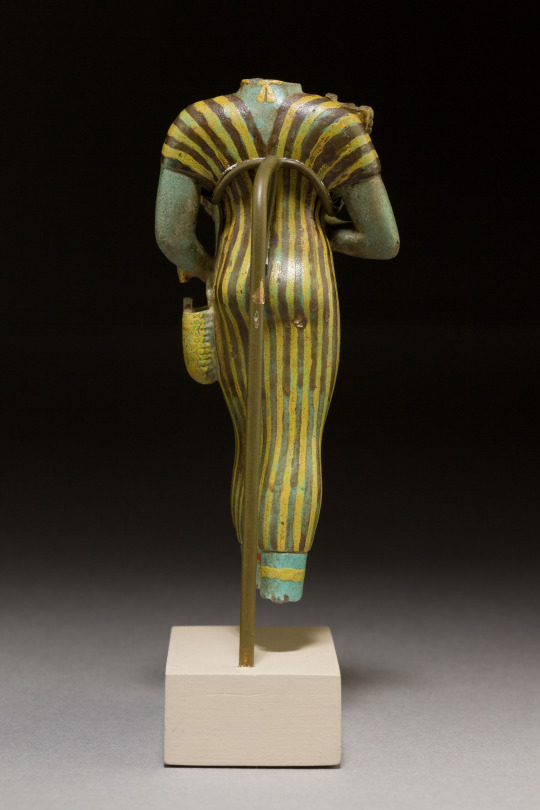
Bastet with Nefertum figure, sistrum, and basket - Met Museum Collection
Inventory Number: 17.194.2214 Third Intermediate Period–Late Period, 945–600 BC Location Information: Location Unlisted
Description:
Although the head, made separately, is now missing, this goddess is identifiable as Bastet. The striped robe is characteristic of the goddess, as are the sistrum and basket she holds. The small statuette with a lotus crown represents her son Nefertum.
#Bastet with Nefertum figure sistrum and basket#bastet#third intermediate#late period#met museum#17.194.2214#location unlisted#womens clothing#TIWC#LPWC#deities#deitiesw
8 notes
·
View notes
Text
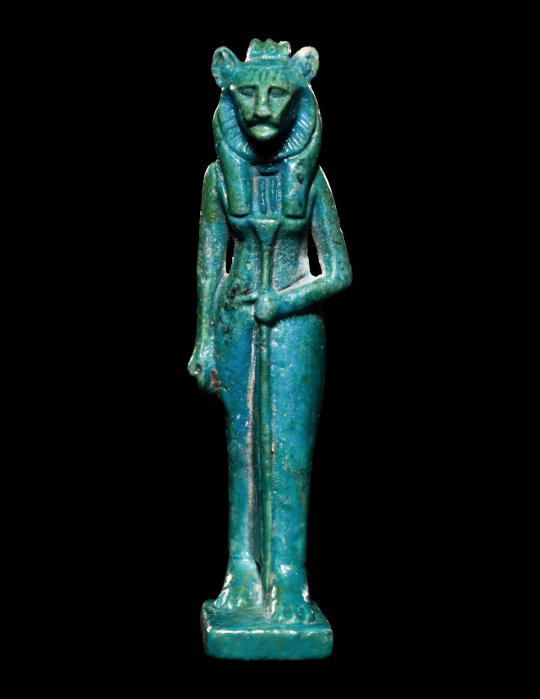
An Egyptian Faience Sekhmet Third Intermediate Period, 21st-22nd Dynasty, 1070-712 B.C.
#An Egyptian Faience Sekhmet#Third Intermediate Period#21st-22nd Dynasty#1070-712 B.C.#statue#ancient artifacts#archeology#archeolgst#history#history news#ancient history#ancient culture#ancient civilizations#ancient egypt#egyptian history#egyptian art#ancient art
613 notes
·
View notes
Text
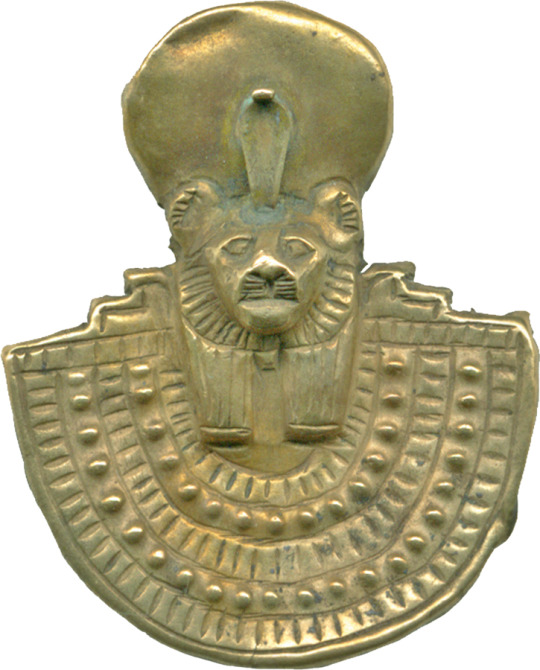
Lionness Headed Usekh, So Called "Aegis"
Egyptian, 1290-664 BCE (Late New Kingdom-Third Intermediate Period)
Silver was not easily obtainable in Egypt and was probably more costly for ancient Egyptians to acquire than gold.
#artifact#Egypt#new kingdom#third intermediate period#Aegis#lioness headed Usekh#pendant#embossed silver
306 notes
·
View notes
Text

YGOPridecember D1: Egyptian
what if they went on a date to an Egypt exhibition and Atem recognized some stuff and Seto is like mhmm I'm buying this exhibit rn (Seto you can't do that... not legally)
ID [chibi drawing of Atem and Seto Kaiba in a date in a museum.
Atem is one hand extended in front of him and is looking at an exhibit that has a gold necklace and something what is supposed to be a ring but was made in the like the size of a bracelet.
Seto is lookinga bit worried at Atem, has one hand on Atem's shoulder and the other is low and has a phone where some part of what is written can be seen, which is "How 2 buy a muse'
background is just simple silhouettes of people looking at other parts of the exhibition. END ID]
#ygopridecember2024#prideshipping#Atem#seto kaiba#ygo#yu gi oh#my art#I searched stuff from third intermediate ancient egypt but then was lazy with bg :3c
97 notes
·
View notes
Text



Three lioness-headed Bastet amulets from the exhibition Ramses and the Gold of the Pharaohs at the Australian Museum. The leftmost one is made of rock crystal and sits on a golden chair. The others, standing with arms by their sides, are made of gold and come from the tomb of Psusennes I's general, Wendjebauendjed.
When: Third Intermediate Period, 21st Dynasty
Where: Egyptian Museum, Cairo
123 notes
·
View notes
Text
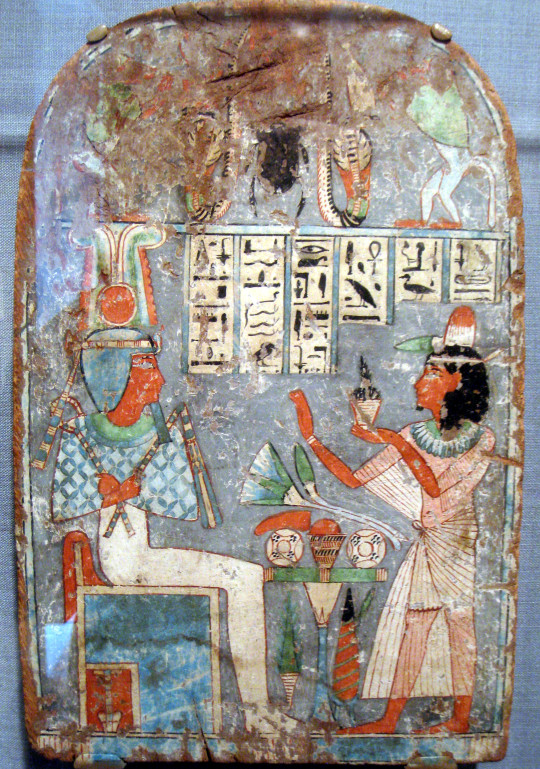
Ancient Egyptian stele (painted wood) showing a certain Ankh-auf-Mut adoring the seated deity Osiris. Artist unknown; Third Intermediate Period. Now in the Worcester Art Museum, Worcester, MA.
#art#art history#ancient art#Egypt#Ancient Egypt#Egyptian art#Ancient Egyptian art#Third Intermediate Period#stele#stela#Egyptian religion#Ancient Egyptian religion#kemetic#Osiris#Worcester Art Museum
364 notes
·
View notes
Text

~ Statuette of Anubis facing a kneeling worshiper.
Period: Third Intermediate Period to Late Period, 25th-26th dynasty
Date: ca. 747-525 B.C.
• Translation from the source: May Anubis, give life, health, long life and great and good old age to Wdja-Hor-resnet, son of Ankh-pa-khered, whose mother is Ta-gemiw(t), who is born (made) of the Mistress of the house, Hy-inty for Pen-pa-djew. May Anubis give life to Wdje-hor-resnet, son of Ankh-pa-khered. May Anubis, who is before the place of the divine booth, give life, health, strength, a long life, and a great old age and happiness to the son of Ankh-pa-khered, whose mother is Ta-gemiw(t), who is Mistress of the House, Hy-inty for Pen-pa-djew.
#ancient#ancient art#history#museum#archeology#ancient egypt#ancient sculpture#archaeology#ancient history#egyptian#egyptology#egypt#anubis#worshipper#third intermediate period#25th Dynasty#26th dynasty#ca. 747 b.c.#ca. 525 b.c.
946 notes
·
View notes
Text
dean walked. trudged. army crawled. so buck could run. i believe this. i shant pit them against each other. however dean still shoulda. in a just world they both woulda
#i saw a post that was like the spn equivalent was deanbenny. which. god. god#911 spoilers#spn#911 fox#also much like 15.18 i have not actually seen the episode and only heard about it after the fact#i wonder if quentin has a place in this. he got a better intermediate (debatably) but an equally bad ending as dean#and of course sera gamble was present at the scene of both crimes#does not bode well for bucks mortality but third times the charm?
18 notes
·
View notes
Text
thinking about concepts with exwhylians’ third dimensional forms and / or flatland lines’ intermediate forms when converting from 2D to 3D bodies,,





[ID: five traditional black ink doodles of concepts for Exwhylian lines and shapes from Gravity Falls, all on beige paper backgrounds.
In the first image, an Exwhylian line is shown. It has a thin body shaped like an upside-down tuning fork, with thin pointed feet and a long torso. It also has a long thing tail with a star on the end. It has a star-shaped head with one blank eye. It is stood upright and slighting smiling.
In the first image, it is a line similar to the one in the first image, except is feet are more rounded and it has a raindrop-shaped symbol on the end of its tail. It is standing and tailoring its head to the left. Its feet are held close together and its tail is curled out to the left side.
In the third image, it is a line wearing a large triangular cloak. It has a circular head with a larger blank eye, a small point on top of its head, triangular eyelashes at either side of its head, thicker pointed feet and a plain tail. It is standing facing the viewer with no expression and its tail can be seen peeking out from under its cloak on the right.
In the fourth image, it is a line with a similar body shape to the one shown in the first image, but it has small hooks on its feet. It has the same tail as the line in the second image. Its head is a circle with another circle around it, a sharp point on top and a blank eye. It is posed as though it is hobbling along, titling its head over to the left.
In the fifth image, it shows a line and an isosceles triangle sitting together. The line has a larger circular head with a small eye and a similar body to the above described line. The isosceles has a black body, a long tail with a flame-shaped end, a circular blank eye and stubby legs.
End ID].
#flatland#oc#i suppose#i’ve seen a few intermediate forms for shapes but never lines#i think they’d be really abstract but still humanoid#and i gave them tails as a treat#they deserve it <3#gravity falls#exwhylia#the two-dimensional dimension#conceptual biology#the third one is wearing a little cloak btw
36 notes
·
View notes
Text
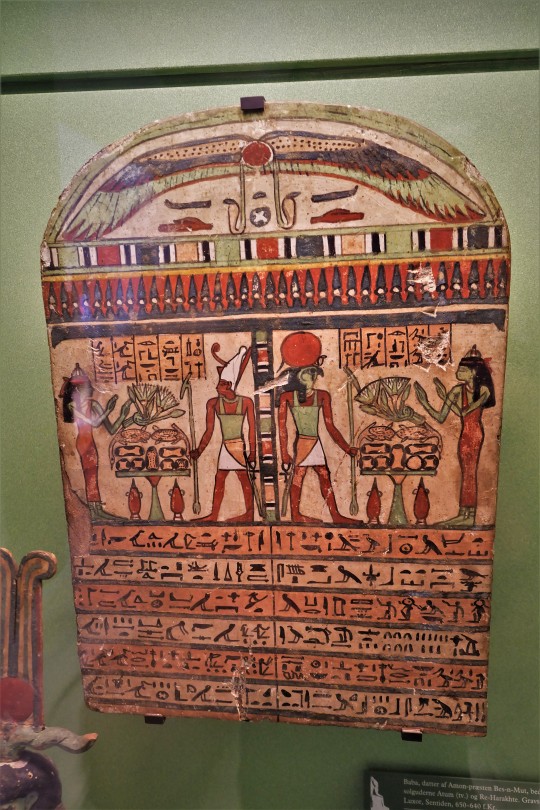
Funerary Stela from Luxor, Egypt dated between 650 - 640 BCE on display at the National Museum of Denmark in Copenhagen, Denmark
Baba, daughter of the priest of Amu Bes-n-Mut, praying to the sun gods Amun (left) and Re-Hrakhte.
Photographs taken by myself 2018
#art#archaeology#history#egypt#egyptian#ancient#bronze age#third intermediate period#national museum of denmark#copenhagen
6 notes
·
View notes
Text
"i waited for ya" and "i can see you, dad" aren't that much different i think
#first love is your father second love is your brother third love is your wife or whatever#children are intermediate because you believe they can fix what's wrong with you
4 notes
·
View notes
Text

Book of the Dead for the Chantress of Amun Nauny - Met Museum Collection
Inventory Number: 30.3.31 Third Intermediate Period, Dynasty 21, ca. 1050 B.C. Location Information: From Egypt, Upper Egypt, Thebes, Deir el-Bahri, Tomb of Meritamun (TT 358, MMA 65), burial of Nauny, first corridor, inside Osiris figure, MMA excavations, 1928–29
Description:
This papyrus was part of the burial of Nauny, a Chantress of the god Amun-Re who died in her seventies. She also bore the title "king's daughter," which probably means that she was a child of the High Priest of Amun and titular king of the Theban area, Painedjem I.
On the papyrus are images and texts from a number of spells. The central scene illustrates Spell 125, better known as the Judgment of Osiris or The Weighing of the Heart. Nauny is in the Hall of Judgment. (...) Behind Nauny stands the goddess Isis, both wife and sister of Osiris. She is identified by the hieroglyph above her head.
#Book of the Dead for the Chantress of Amun Nauny#third intermediate#dynasty 21#upper egypt#thebes#deir el bahri#deir el-bahri#tomb of meritamun#met museum#30.3.31#womens clothing#TIWC#deities#deitiesw#aset
6 notes
·
View notes
Text

Lotiform Chalice Third Intermediate Period Ca. 945–664 B.C. From Middle Egypt, Tuna el-Gebel region; From Egypt.
The fragrant blossom of the blue lotus is a common motif in all forms of Egyptian art. Because it opened its petals to the sun each morning, the flower became a symbol of creation and rebirth. During the Third Intermediate Period, faience chalices derived from the shape of the blossom and other faience delicacies were decorated with relief scenes evoking a constellation of myths having to do with the birth of the king as child of the sun god out of the watery marsh environment, and thus the renewal of the world out of the flooded land anticipated with the beginning of the Inundation at the Egyptian New Year.
#Lotiform Chalice#Ca. 945–664 B.C.#Third Intermediate Period#blue#blue lotus#pottery#Egyptian pottery#ancient pottery#ancient artifacts#archeology#archeolgst#history#history news#ancient history#ancient culture#ancient civilizations#ancient egypt#egyptian history#egyptian art
838 notes
·
View notes
Text

Amulet of the Goddess Sekhmet
Egyptian, Third Intermediate Period (about 1069–664 BCE)
With the head of a lion and the idealized figure of a woman, this amulet depicts a powerful ancient Egyptian goddess. Ancient Egyptians—both living and dead—wore amulets of gods and goddesses to bring protection and health. These included depictions of deities in their human, animal, or mixed forms. This amulet represents one of several goddesses who appeared in a hybrid leonine-human form, likely Sekhmet, a goddess of pestilence and divine violence. In Egyptian mythology, Sekhmet acted as the Eye of Re, the daughter and protector of the sun god, Re. She had the ability to make enemies fall sick or heal those who were afflicted, so she would have provided the wearer of this amulet with protection from disease and other dangerous forces.
371 notes
·
View notes
Text
If we accept the ~1100 BC dating as correct for Atem (which I do) then he coincides with the decline of ancient Egypt as a powerful state. in other words it's historically accurate for pharaoh set to put his foot through it
#something poetic about denying justice to kul elna and the subsequent collapse of the ancient egyptian state into#factional politics and civil wars and invasions in the third intermediate period#intern memo
37 notes
·
View notes
Text

The weighing of the heart, from the Book of the Dead of Aaner. A green Anubis kneels amidst the scales, holding the deceased's heart, which also appears on the scale's right-handed tray, with a little Maat goddess in the left tray. Plenty of offerings sit in front of Anubis. To the right, Aaner holds his eyes and his mouth (that is, the hieroglyphs which represent eye and mouth -- he still has an eye and a mouth in his face!).
When: Third Intermediate Period, 21st Dynasty
Where: Egyptian Museum, Turin
#Ancient Egypt#papyrus#Book of the Dead#Anubis#weighing of the heart#Third Intermediate Period#21st Dynasty#Museo Egizio Turin#Aaner
135 notes
·
View notes